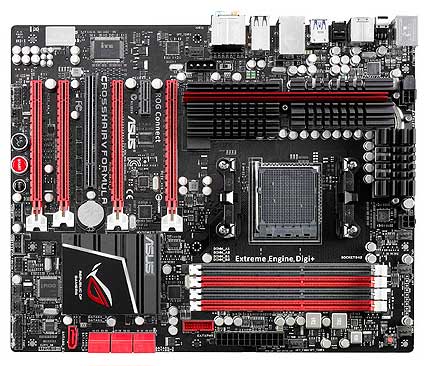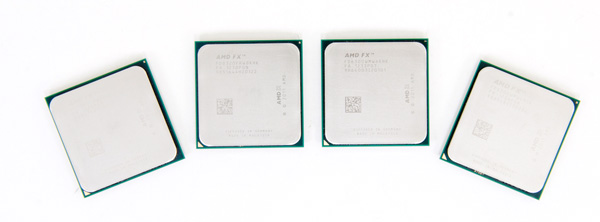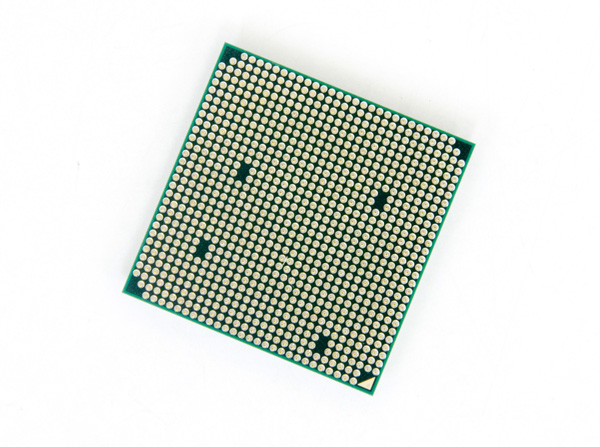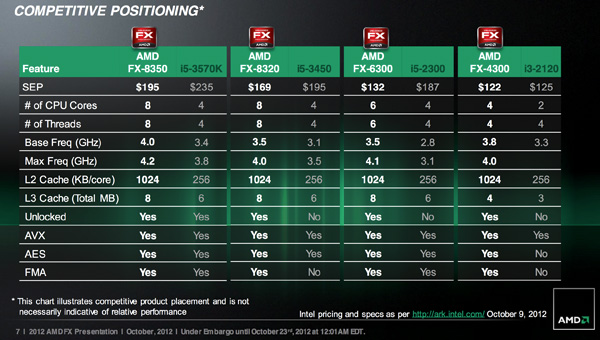The Vishera Review: AMD FX-8350, FX-8320, FX-6300 and FX-4300 Tested
by Anand Lal Shimpi on October 23, 2012 12:00 AM ESTLast year's launch of AMD's FX processors was honestly disappointing. The Bulldozer CPU cores that were bundled into each Zambezi chip were hardly power efficient and in many areas couldn't significantly outperform AMD's previous generation platform. Look beyond the direct AMD comparison and the situation looked even worse. In our conclusion to last year's FX-8150 review I wrote the following:
"Single threaded performance is my biggest concern, and compared to Sandy Bridge there's a good 40-50% advantage the i5 2500K enjoys over the FX-8150. My hope is that future derivatives of the FX processor (perhaps based on Piledriver) will boast much more aggressive Turbo Core frequencies, which would do wonders at eating into that advantage."
The performance advantage that Intel enjoyed at the time was beyond what could be erased by a single generation. To make matters worse, before AMD could rev Bulldozer, Intel already began shipping Ivy Bridge - a part that not only increased performance but decreased power consumption as well. It's been a rough road for AMD over these past few years, but you have to give credit where it's due: we haven't seen AMD executing this consistently in quite a while. As promised we've now had multiple generations of each platform ship from AMD. Brazos had a mild update, Llano paved the way for Trinity which is now shipping, and around a year after Zambezi's launch we have Vishera: the Piledriver based AMD FX successor.
At a high level, Vishera swaps out the Bulldozer cores from Zambezi and replaces them with Piledriver. This is the same CPU core that is used in Trinity, but it's optimized for a very different purpose here in Vishera. While Trinity had to worry about working nicely in a laptop, Vishera is strictly a high-end desktop/workstation part. There's no on-die graphics for starters. Clock speeds and TDPs are also up compared to Trinity.
| CPU Specification Comparison | ||||||||
| CPU | Manufacturing Process | Cores | Transistor Count | Die Size | ||||
| AMD Vishera 8C | 32nm | 8 | 1.2B | 315mm2 | ||||
| AMD Zambezi 8C | 32nm | 8 | 1.2B | 315mm2 | ||||
| Intel Ivy Bridge 4C | 22nm | 4 | 1.4B | 160mm2 | ||||
| Intel Sandy Bridge E (6C) | 32nm | 6 | 2.27B | 435mm2 | ||||
| Intel Sandy Bridge E (4C) | 32nm | 4 | 1.27B | 294mm2 | ||||
| Intel Sandy Bridge 4C | 32nm | 4 | 1.16B | 216mm2 | ||||
| Intel Lynnfield 4C | 45nm | 4 | 774M | 296mm2 | ||||
| Intel Sandy Bridge 2C (GT1) | 32nm | 2 | 504M | 131mm2 | ||||
| Intel Sandy Bridge 2C (GT2) | 32nm | 2 | 624M | 149mm2 | ||||
Vishera is still built on the same 32nm GlobalFoundries SOI process as Zambezi, which means there isn't much room for additional architectural complexity without ballooning die area, and not a whole lot of hope for significantly decreasing power consumption. As a fabless semiconductor manufacturer, AMD is now at GF's mercy when it comes to moving process technology forward. It simply has to make 32nm work for now. Piledriver is a light evolution over Bulldozer, so there's actually no substantial increase in die area compared to the previous generation. Cache sizes remain the same as well, which keeps everything roughly the same. These chips are obviously much larger than Intel's 22nm Ivy Bridge parts, but Intel has a full node advantage there which enables that.
Piledriver is a bit more power efficient than Bulldozer, which enables AMD to drive Vishera's frequency up while remaining in the same thermal envelope as Zambezi. The new lineup is in the table below:
| CPU Specification Comparison | ||||||||||
| Processor | Codename | Cores | Clock Speed | Max Turbo | L2/L3 Cache | TDP | Price | |||
| AMD FX-8350 | Vishera | 8 | 4.0GHz | 4.2GHz | 8MB/8MB | 125W | $199 | |||
| AMD FX-8150 | Zambezi | 8 | 3.6GHz | 4.2GHz | 8MB/8MB | 125W | $183 | |||
| AMD FX-8320 | Vishera | 8 | 3.5GHz | 4.0GHz | 8MB/8MB | 125W | $169 | |||
| AMD FX-8120 | Zambezi | 8 | 3.1GHz | 4.0GHz | 8MB/8MB | 125W | $153 | |||
| AMD FX-6300 | Vishera | 6 | 3.5GHz | 4.1GHz | 6MB/8MB | 95W | $132 | |||
| AMD FX-6100 | Zambezi | 6 | 3.3GHz | 3.9GHz | 6MB/8MB | 95W | $112 | |||
| AMD FX-4300 | Vishera | 4 | 3.8GHz | 4.0GHz | 4MB/4MB | 95W | $122 | |||
| AMD FX-4100 | Zambezi | 4 | 3.6GHz | 3.8GHz | 4MB/4MB | 95W | $101 | |||
The table above says it all. TDPs haven't changed, cache sizes haven't changed and neither have core counts. Across the board Vishera ships at higher base frequencies than the equivalent Zambezi part, but without increasing max turbo frequency (in the case of the 8-core parts). The 6 and 4 core versions get boosts to both sides, without increasing TDP. In our Trinity notebook review I called the new CPU core Bulldozed Tuned. The table above supports that characterization.
It's also important to note that AMD's pricing this time around is far more sensible. While the FX-8150 debuted at $245, the 8350 drops that price to $199 putting it around $40 less than the Core i5 3570K. The chart below shows where AMD expects all of these CPUs to do battle:
AMD's targets are similar to what they were last time: Intel's Core i5 and below. All of the FX processors remain unlocked and ship fully featured with hardware AES acceleration enabled. Most Socket-AM3+ motherboards on the market today should support the new parts with nothing more than a BIOS update. In fact, I used the same ASUS Crosshair V Formula motherboard I used last year (with a much newer BIOS) for today's review:

The Test
For more comparisons be sure to check out our performance database: Bench.
| Motherboard: | ASUS Maximus V Gene (Intel Z77) ASUS Crosshair V Formula (AMD 990FX) |
| Hard Disk: | Intel X25-M SSD (80GB) Crucial RealSSD C300 OCZ Agility 3 (240GB) Samsung SSD 830 (512GB) |
| Memory: | 4 x 4GB G.Skill Ripjaws X DDR3-1600 9-9-9-20 |
| Video Card: | ATI Radeon HD 5870 (Windows 7) NVIDIA GeForce GTX 680 (Windows 8) |
| Desktop Resolution: | 1920 x 1200 |
| OS: | Windows 7 x64/Windows 8 Pro x64 |













250 Comments
View All Comments
CeriseCogburn - Tuesday, October 30, 2012 - link
So did you buy the i5 3470, or the FX 6200 ?According to you and your 1st chart, that's what "most of us bought". Okay, since we know that's total BS, what you said is also total BS.
" because most of us will buy the most performant processor per dollar "
LOL - okay, so there's a big problem bub - OC the 2500K and it skyrockets off the top of your 1st chart straight up.
So, did you buy the 2500K, like "most of us did" if we "used your declared knowledge about us all" and added 2 watts of common sense into the mix ?
Why must you people torture us so ?
Idiot10 - Tuesday, May 7, 2013 - link
Hey Mr. ChariseHogburn, why don't yoy take your 2500K with you and leave us all to our musings? You seem to know everything about processors why don't you let others do what they want to do? You big piece of Intel mercenary shit! SOB!!!!Mathos - Tuesday, October 23, 2012 - link
It does give a reason and an upgrade path to finally move up from my aging P2 1090T. One of the main workloads I do when I use my PC heavily is indeed easy h.264 encoding for game and other types of video. Always nice to be able to knock a video file down from 2.5GB to 200-500MB. I've personally always used MSI or ASRock boards myself, with some Asus boards when I can catch the price right, in reply to the board used for the benchmarks.I noticed there are overclocking numbers that do look decent. Some things I'm curious about. How do they take to undervolting? My luck with previous AMD generations has been pretty good when it came to that. At least when I felt like tinkering. Use to be able to run the old 9600be and 9850be considerably lower than stock voltages for example, at stock speeds, and some times even with mild overclocks on the NB's. I've noticed with that AMD tends to be fairly conservative.
And since they appear to still be using the same IMC/L3 speed linked to the north bridge hyper transport speed. How does upping the actual speed of the NB IMC/L3 effect the performance and stability of the platform. I know back in the day of the 9600be/9850be I could generally get them close to the same performance level as a core2 quad at the same clock speeds through that kind of tweaking.
And on a final note, it's a nice performance increase overall, even in single threaded apps, over the bulldozer cores. But you'd think they would of implemented a way to gang the integer cores and make them act as a single core for single threaded performance. That's all it would really take the pick up a bit of the slack I think.
jensend - Tuesday, October 23, 2012 - link
Why the heck are you starting your power consumption charts at 50W rather than at zero?That's *extremely* misleading, wildly exaggerating AMD's disadvantage. AMD has roughly 2x the power consumption of IVB at load and 1.25x the power consumption at idle- but by starting your chart at 50W you're exaggerating that into over 3x at load *and at idle*.
*Please* get yourself a copy of "The Visual Display of Quantitative Information" and read the section talking about the "lie factor" of a graph or chart.
Spunjji - Tuesday, October 23, 2012 - link
I think they are anticipating their readership noticing that the graph starts at 50W, just as you did.kevith - Tuesday, October 23, 2012 - link
They probably do. But that´s not the point. A GRAPH is meant to show a string of figures as a drawing.When a graph starts at anything but zero, it will not show a true picture.
With two pieces of something to compare, where both lay in the area between say 90 and 91 of some kind of value..
If you then make a graph, thats going from 89-92 in 1/10´s, you wil get a graph, that shows a very uneven curve, going up and down all the time, with seemingly big differences in values.
But if it started at zero, like it´s supposed to, you would see a almost straight line, reflecting the true picture: These two things are practically alike in this specific area.
IF you don´t make a graph like that ALL THE TIME, there´s no need to make a graph at all, you could just write the values as figures.
CeriseCogburn - Tuesday, October 30, 2012 - link
No spooge, it's called amd fanboy advantage, that is what should be always anticipated, and is actually always provided.Pythias - Tuesday, October 23, 2012 - link
Why was the i3 dropped from some of the charts?CeriseCogburn - Tuesday, October 30, 2012 - link
Because it kicked so much amd pileofcrap.redwarrior - Tuesday, October 23, 2012 - link
Anands testing was the usual lazy-designed testing with poor planning. Why run sysmark, that every one knows uses testing methods that tend to ignore multi-threading.. Keep the test on applications only and make sure your gaming apps are representative. I saw better testing done on several other websites where the usually poorly designed and coded trash was balanced with other games that did employ some level of multi-threading The FX-8350 did immensely better in that gaming selection. Mostl gamers are not shoot-em-up fascist gamers. There is no reason for Anand to stack the game selctions in the single-threaded direction only. I beleive Anand is a shill for Intel and chose the stupid sysmark tests and the game sin such a fashion to downplay the vast performance improvments that are possible from the FX-8350 cpu. That is one reason I do NOT spend much time on this site any more.There is nothing I detest more than intellectual dishionesty. Check out Tom's hardware their review was done more scientifically and had a balanced selection of tests. The Vishera FX-8350clearly bested the I5 3570 in most tests and was the best performance for the buck by far. A better objectively designed test. No axes to grind. To hell with Anand, unofficial Intel shill and LAZY intellectually.